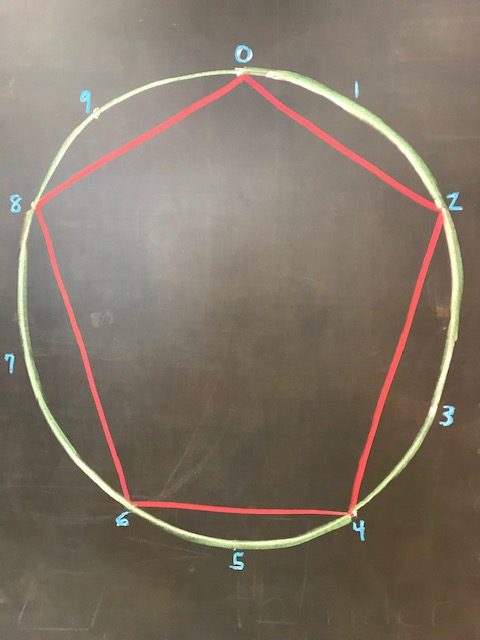Imagine a place where children’s laughter echoes through the trees, where their curiosity leads them on adventures through fields and forests, and where learning happens not just in the classroom, but everywhere they go. This is the heart of a nature-based education – a place where children thrive, growing in ways that touch their minds, bodies, and spirits, while preparing them for whatever path they would like to take in life.
At Mangrove School of Sarasota, we believe that education should be as natural as the world around us. In this first post of our series, we want to share with you why we’ve chosen this path, and why it might be just what your child needs to grow and flourish.
A World Beyond Four Walls
Traditional classrooms are often confined to four walls, with learning restricted to textbooks and screens, often very overstimulating with cluttered walls and harsh fluorescence lighting. When learning outdoors, the world itself becomes the classroom. Here, children learn by doing – for example, by digging in the soil, observing the changing seasons, and exploring the intricate patterns of leaves and flowers. This hands-on approach not only makes learning more engaging but also helps children develop critical thinking and problem-solving skills in all academic areas. When learning is engaging in this way, there is more joy and eagerness to take on more challenging tasks, because the process itself is rewarding, rather than simply bringing a lesson to completion and moving onto the next task.
When children interact with nature, they experience learning in its most dynamic and tangible form. They’re not just reading about life cycles; they’re witnessing them in real-time as they plant seeds and watch them grow. They’re not just studying ecosystems; they’re exploring them firsthand, discovering the connections between plants, animals, and their environment. These experiences are not only educational but deeply memorable, creating a foundation of knowledge and wonder that stays with them for life.
Fostering Creativity and Imagination
In a world dominated by screens, it’s easy for creativity to take a backseat, but nature has a way of sparking the imagination in ways that no app or video game can. Here children are encouraged to play, to create, and to let their imaginations run wild. Whether they’re building forts out of palm fronds, crafting art from natural materials, or simply daydreaming under a tree, nature provides endless opportunities for creative expression.
Research shows that time spent in nature can enhance creativity and problem-solving skills. According to Richard Louv, author of Last Child in the Woods, children who play in natural settings are more likely to invent their own games, use their imagination, and engage in cooperative play. These are essential skills that contribute to a child’s overall development, preparing them not just for school, but for life.
Nurturing Emotional Well-being
Childhood can be full of pressures, from academic expectations to social challenges. Nature offers a sanctuary from these stresses, providing a peaceful, calming environment where children can be themselves. We place a strong emphasis on emotional well-being, as we know that children learn best when they feel safe, happy, and connected to the world around them.
Spending time in nature has been shown to reduce stress and anxiety, improve mood, and boost overall mental health. The natural world has a soothing effect, helping children feel grounded and at ease. It also fosters a sense of wonder and awe, reminding them of the beauty and magic in the world—a feeling that can be all too rare in today’s fast-paced, technology-driven society.
Building Resilience and Independence
One of the greatest gifts we can give our children is the ability to navigate the world with confidence and resilience. Nature provides countless opportunities for children to develop these traits. Whether they’re climbing a tree, crossing a stream, or navigating a forest trail, they’re constantly testing their limits, learning to take calculated risks, and discovering their own strength and capabilities.
At the Mangrove School, we encourage children to explore, to take on challenges, and to learn from their experiences. We believe that through these adventures, children not only build physical skills but also develop the resilience and independence they’ll need to thrive in all areas of life.
A Community of Care
Finally, a nature-based education isn’t just about what children learn; it’s about the community they become a part of. We foster a close-knit, supportive community where children, parents, and educators work together to create a nurturing environment. We believe in the importance of strong relationships, and we know that when children feel connected to those around them, they’re more likely to succeed and feel a sense of belonging.
We invite you to join us on this journey – to give your child the gift of a nature-based education, where they can grow, learn, and thrive in a setting that celebrates the joys of childhood. Together we can create a brighter, more meaningful future for our children – one where they’re not just prepared for the next grade, but for the world.
Come check us out – schedule a call today to learn more about our programming! https://info.mangrovesarasota.com/schedule-call
Reference:
Louv, Richard. Last Child in the Woods: Saving Our Children from Nature-Deficit Disorder. Algonquin Books, 2005.

